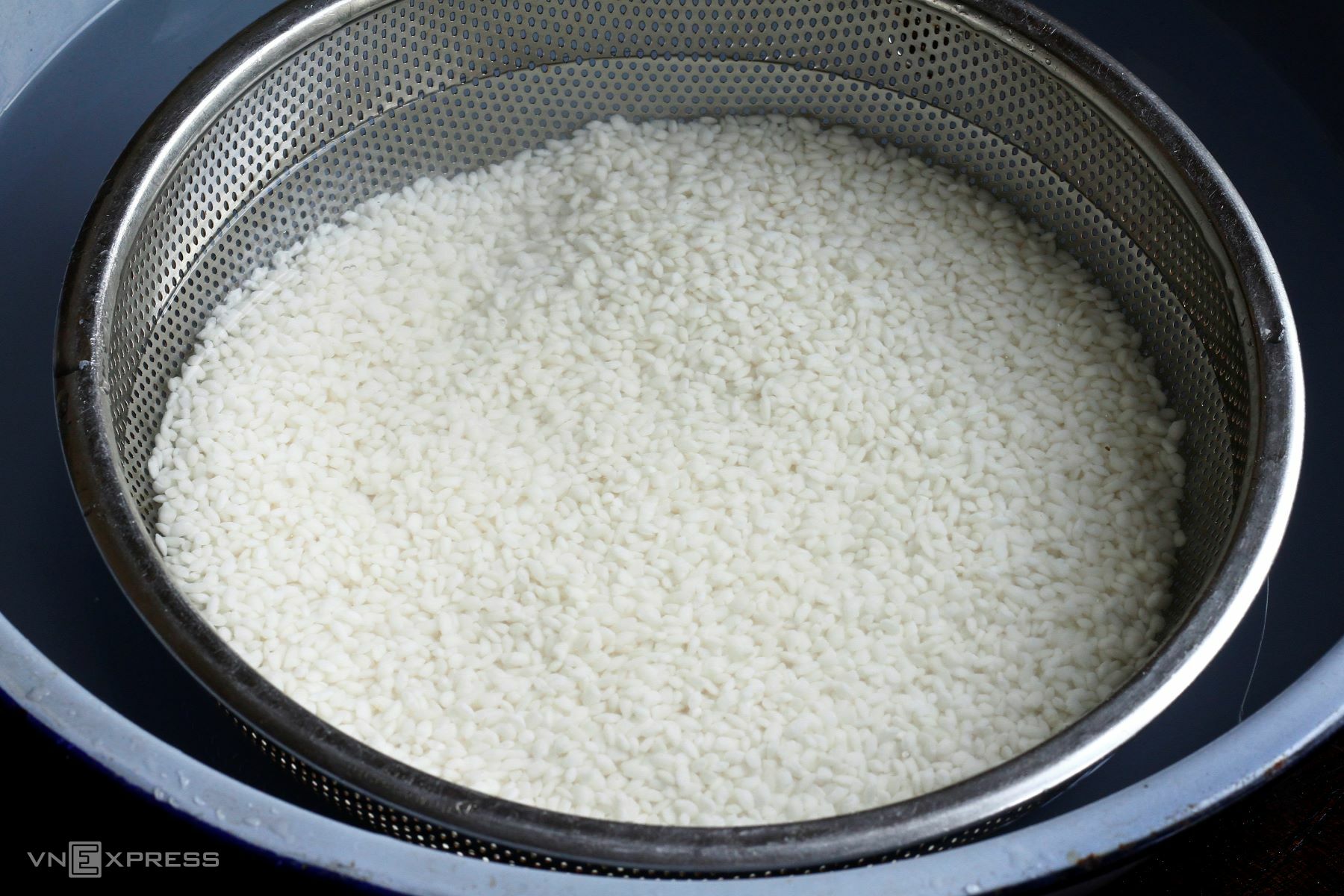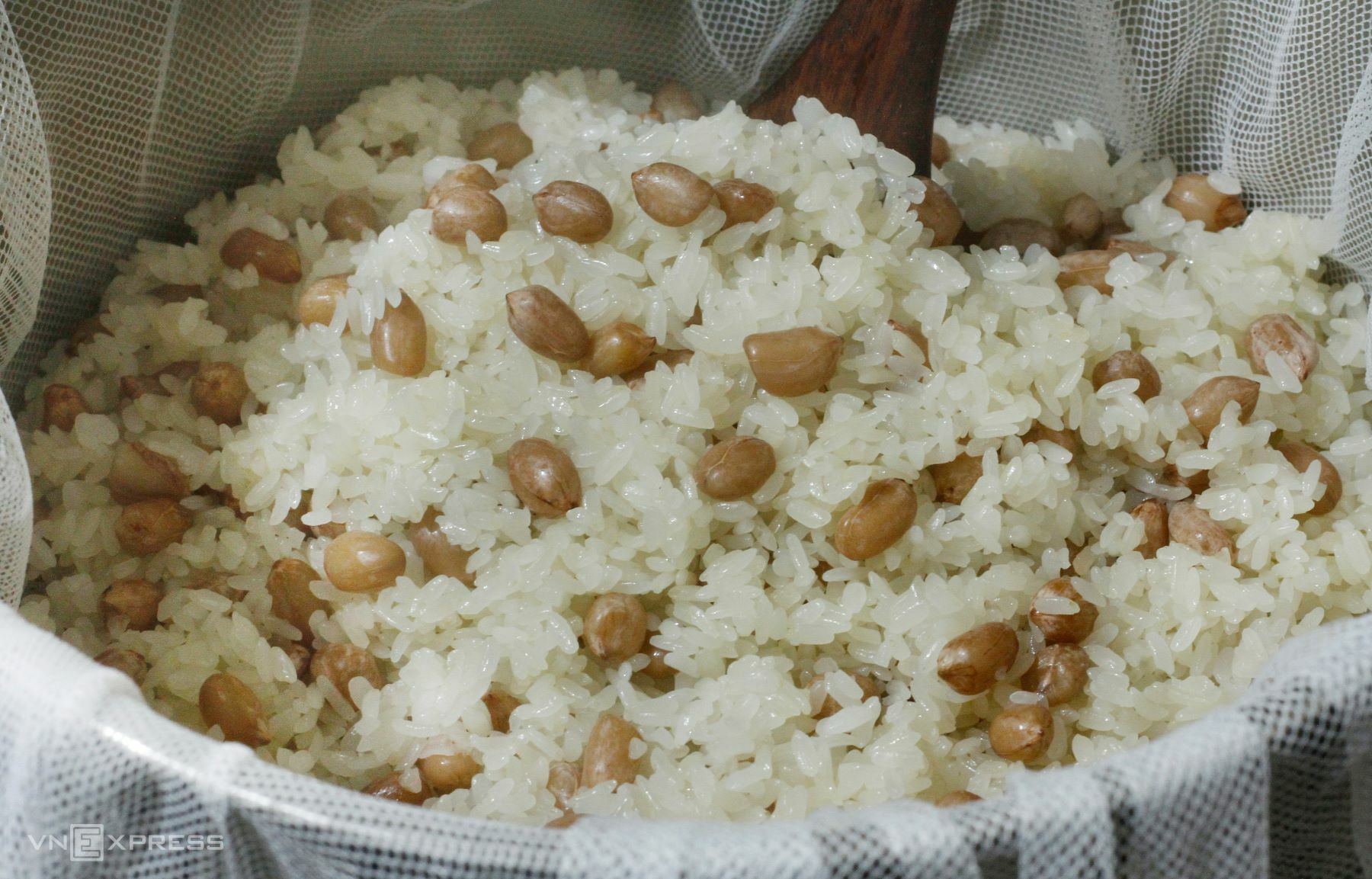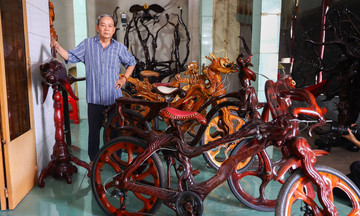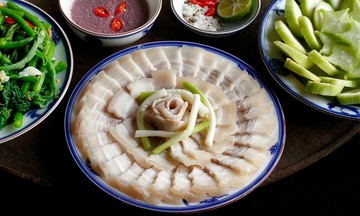Sticky rice consists primarily of amylopectin starch, which absorbs water more slowly than the amylose found in regular rice. Without soaking, the starch gelatinizes unevenly during cooking, leading to a mixture of mushy and hard grains. Soaking allows water to gradually penetrate the grains, preparing the starch structure for the steaming process. This is why steamed sticky rice made from soaked grains is generally more pliable, with distinct yet softly connected grains.
 |
Experienced cooks typically soak sticky rice for 6-8 hours before steaming. Photo: Bui Thuy |
Experienced cooks typically soak sticky rice for 6-8 hours before steaming. Photo: Bui Thuy
Some worry that soaking rice may diminish vitamins and minerals. While it's true that some B vitamins in the bran layer can dissolve during soaking, white sticky rice has minimal bran remaining after milling, making this loss negligible. However, brown or black sticky rice, which retains its bran rich in B1, B2 vitamins, and antioxidants, may lose more of these nutrients with prolonged soaking. In this case, shorter soaking times or using warm water can balance desired texture with nutritional value.
Soaking sticky rice also provides a natural "detoxification" effect. Sticky rice and other grains contain protective substances like lectins and phytates. High levels of lectins can cause indigestion, bloating, and hinder nutrient absorption. Phytates, also known as phytic acid, bind to iron, zinc, and calcium, reducing their bioavailability. Soaking sticky rice partially dissolves lectins and phytates, while activating the natural enzyme phytase within the grains, which further breaks down phytic acid. This process not only softens the grains but also makes the steamed rice more digestible and improves mineral absorption.
Pre-soaking is beneficial not only for sticky rice but also for various beans used in many dishes. Green bean, black bean, and red bean desserts all require a soaking step. This not only softens the beans but also removes some of the lectins, phytates, and tannins found in their skins. Soaking allows beans to cook faster, results in a clearer broth, and enhances the beans' natural sweetness, reducing the bloating that can occur when they are cooked directly without soaking. This practice, rooted in traditional culinary knowledge, has a clear scientific basis, contributing to both the taste and healthfulness of the dishes.
 |
Traditional sticky rice with peanuts. Photo: Bui Thuy |
Traditional sticky rice with peanuts. Photo: Bui Thuy
Soaking times vary depending on the type of sticky rice (sticky rice with yellow flowers, fragrant sticky rice, velvet sticky rice, Thai sticky rice, etc.) and whether the rice is new or old. New-harvest sticky rice, with its softer grains, only needs 3-4 hours of soaking. Conversely, denser, firmer varieties or older sticky rice typically require 6-8 hours to fully absorb water. Warm water can be used to shorten the soaking time if needed.
After soaking, rinse the rice lightly to remove any sourness from prolonged soaking, drain well, and then steam. This ensures even cooking and prevents stickiness or mushiness. It's important not to soak sticky rice for more than 12 hours, as this can cause the grains to sour and crack, affecting the quality of the final product.
Bui Thuy












